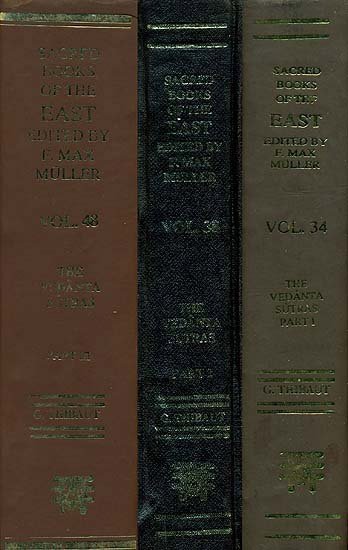Brahma Sutras (Ramanuja)
by George Thibaut | 1904 | 275,953 words | ISBN-10: 8120801350 | ISBN-13: 9788120801356
The English translation of the Brahma Sutras (also, Vedanta Sutras) with commentary by Ramanuja (known as the Sri Bhasya). The Brahmasutra expounds the essential philosophy of the Upanishads which, primarily revolving around the knowledge of Brahman and Atman, represents the foundation of Vedanta. Ramanjua’s interpretation of these sutras from a V...
Sutra 4.3.8
8. But on account of nearness there is that designation.
Hiraṇyagarbha is the first created being (as declared by the text 'he who creates Brahma'); he thus stands near to Brahman, and therefore may be designated by the same term (viz. Brahman). This explanation is necessitated by the reasons set forth in the preceding Sūtras (which show that the real highest Brahman cannot be meant).—But, if the soul advancing on the path of the Gods reaches Hiraṇyagarbha only, texts such as 'This is the path of the Gods, the path of Brahman; those who proceed on that path do not return to the life of man' (Ch. Up. IV, 15, 6), and 'moving upwards by that a man reaches immortality' (VIII, 6, 6), are wrong in asserting that that soul attains to immortality and does not return; for the holy books teach that Hiraṇyagarbha, as a created being, passes away at the end of a dviparārdha-period; and the text 'Up to the world of Brahman the worlds return again' (Bha. Gī. VIII, 16) shows that those who have gone to Hiraṇyagarbha necessarily return also.
